
| Mont Tremblant National Park |
Getting There |
|
||
|
We were staying in a tent at a campsite on the edge of Lac Monroe. However, our “Huttopia”, situated in a small clearing with the Laurentian forest all around, was no ordinary tent. It was large, comfortable, well-equipped with good mattresses, tables, the wherewithall to cook and eat and, above all, it was heated. The latter made a big difference, as the skies opened soon after we arrived and rained almost non-stop for the rest of the day. On the way up, my attention had been focussed on the developing rain. Such conditions had been forecast by the weather bureau for the next six days and I was becoming increasingly despondent. The fair Nello, on the other hand, was focussing on the increasing amount of autumn colour appearing in the trees - shades of red, orange and yellow amongst the greens of the forest – and she was becoming more excited. She, of course, had the right attitude. We were here to see the change of autumn colours and no amount of rain was going to detract from that - I had a little talk to myself. For the moment, we resorted to plan B, which became read books and catch up with journals while drinking hot coffee and eating biscuits, followed by a nap in a warm sleeping bag. |
|
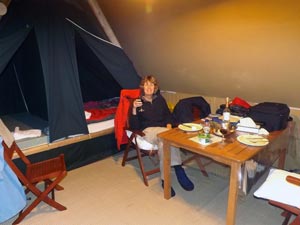 How to pass a rainy day in a tent |
 The burglar beats a hasty retreat |
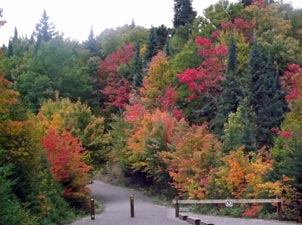 An intense patch of colour near Lac Monroe |
|
||
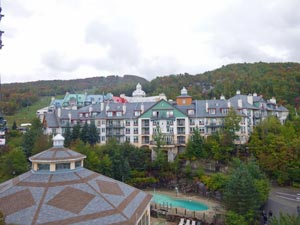 Mont Tremblant ski station |
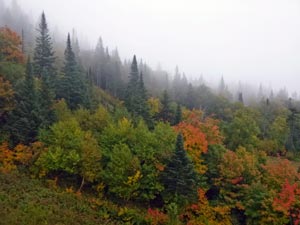 The misty slopes of Mont Tremblant |
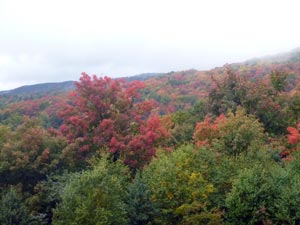 Looking over the Mont Tremblant forest |
|
||
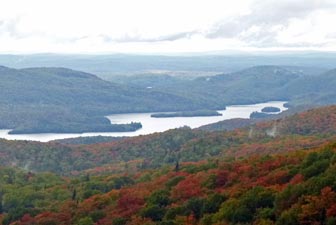 View over the forest to Lac Tremblant |
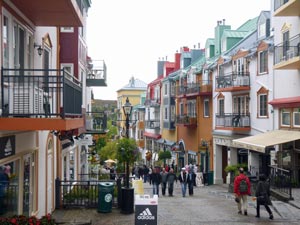 Village street at Mont Tremblant |
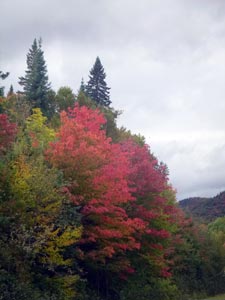 |
|
||
    |
Descent of Les Meandres de la Diable by canoe (13.5km) |
|
|
|
|
|
||
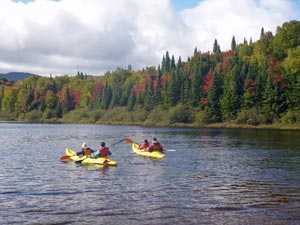 Heading off on Lac Chat .... |
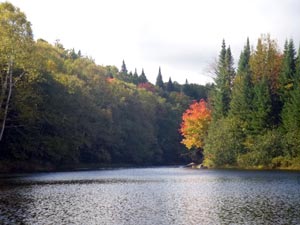 .... to enter the Diable River ..... |
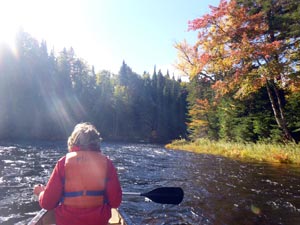 .... and head off downstream |
|
|
|
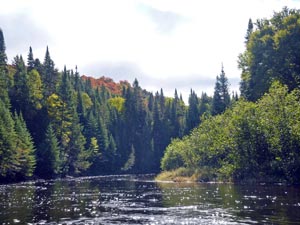 At times the river was like a glassy highway through the forest |
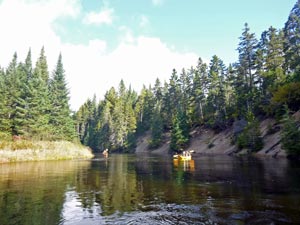 The sandy banks of a big bend in the river |
|
|
||
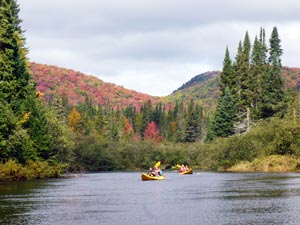 Paddling down a long reach |
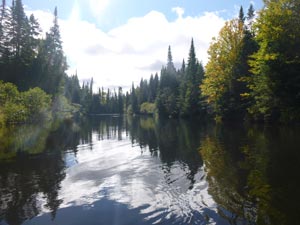 Reflections in a still reach |
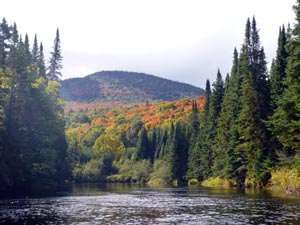 Riverside conifers with a hillside of broadleaf trees |
|
||
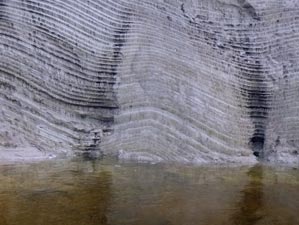 Some curious riverbank strata |
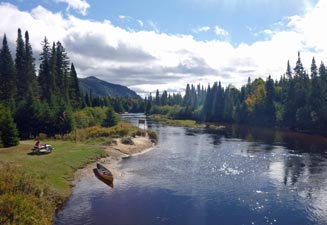 Lunch break at Sablonniere campground |
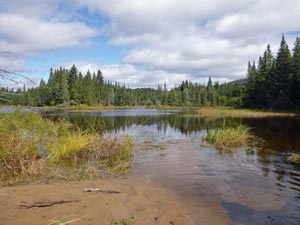 A swampy lake bordering the Diable |
|
||
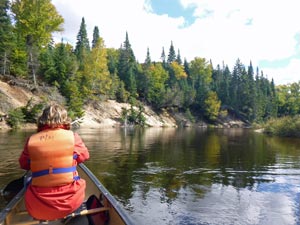 Time to just drift and enjoy |
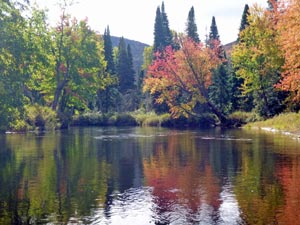 A palette of autumn colours .... |
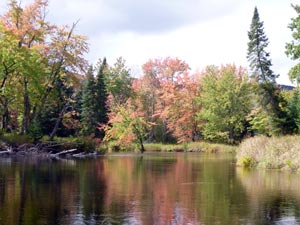 ... and yet more pastel shades |
|
|
|
|
||
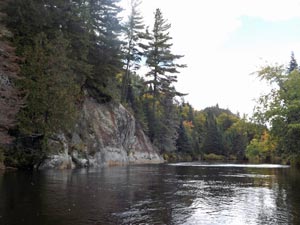 Nearing the rocky walls of Le Centenaire |
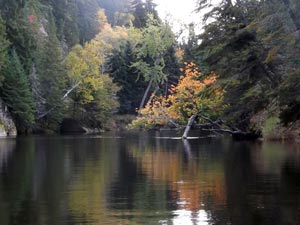 A still dark reach beneath the cliffs |
|
|
||
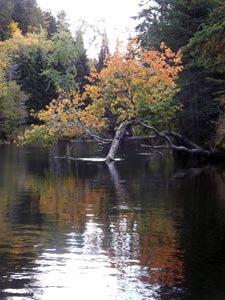 |
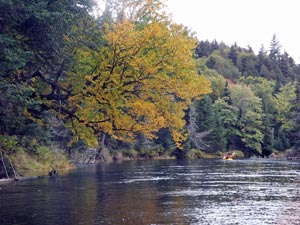 Golden beech overhanging the river |
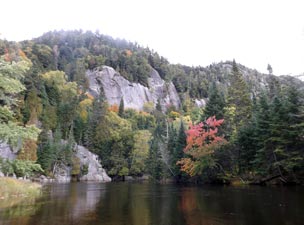 The cliffs of Le Centenaire |
|
||
 |
A late afternoon walk to La Roche (5km - 280m ascent – 280m descent) |
|
|
|||
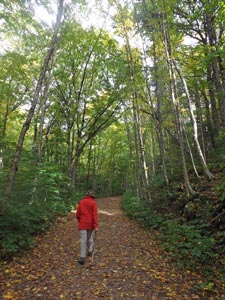 Heading into the Laurentian forest ...
|
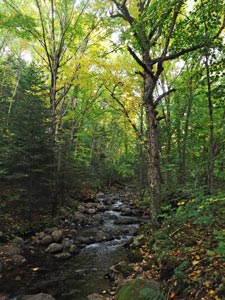 ...past rocky streams ... |
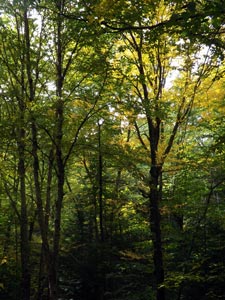 ...beneath a gold-tinted canopy ... |
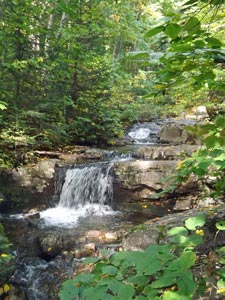 ...and next to babbling cascades
|
|
|||
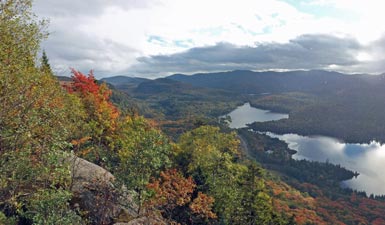 View from La Roche to the south |
|||
|
|
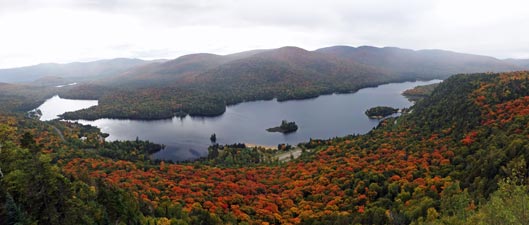 View from La Roche over the autumn forests that surround Lac Monroe |
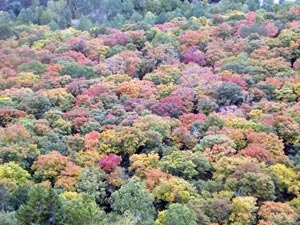 The pastel shades of a Laurentian autumn |
|
|||
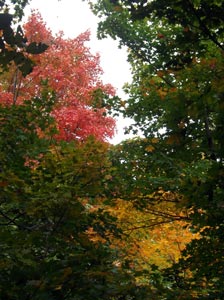 Back home beneath the canopy colours ... |
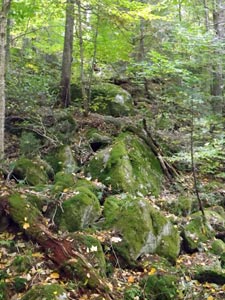 ... where mossy rocks abound ... |
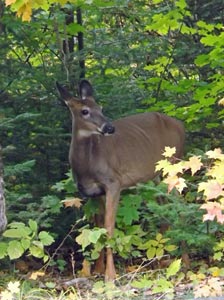 ... and mule deer roam |
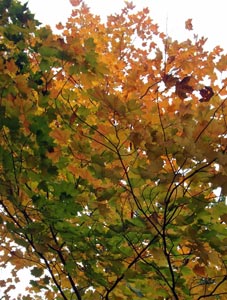 The canopy above |
|
    |
Leaving Mont Tremblant |
|
||
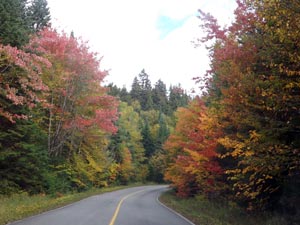 The road into Mont Tremblant National Park |
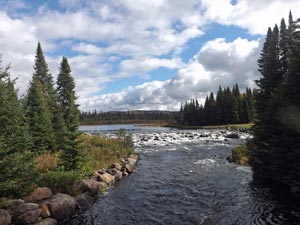 The cascades of Lac Escalier |
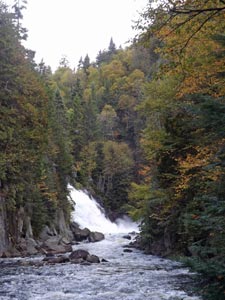 The Diable Falls and River |
|
||
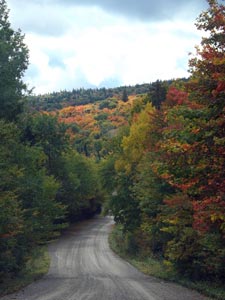 Gravel road deep in the forest |
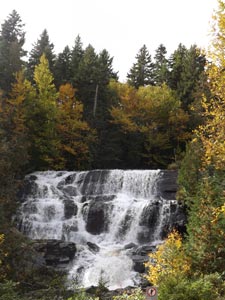 La Chute aux Rats ... |
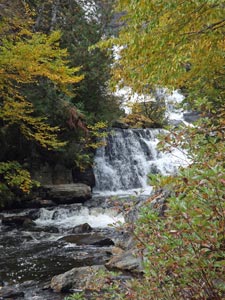 ... or the Rat Falls |
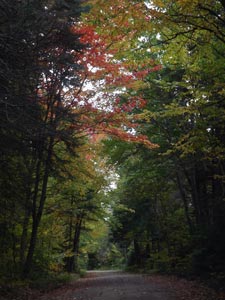 A tranquil forest track |
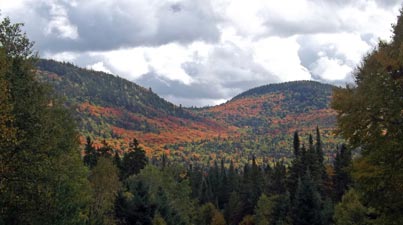 The red glow of autumn over the Laurentian Mountains |
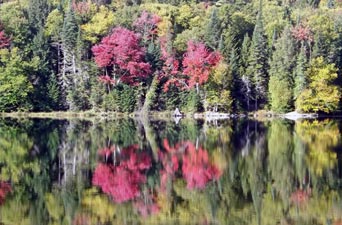 Reflections of autumn |
|
  |